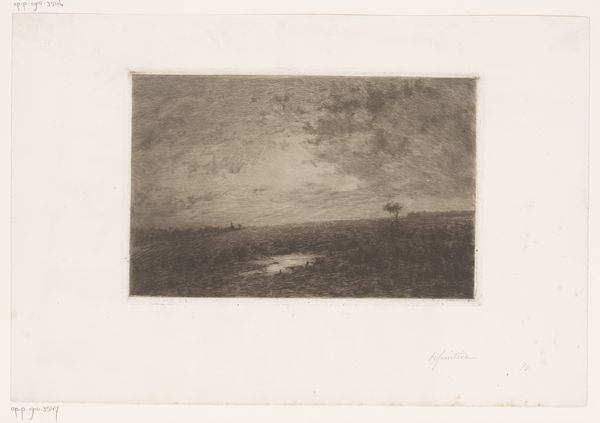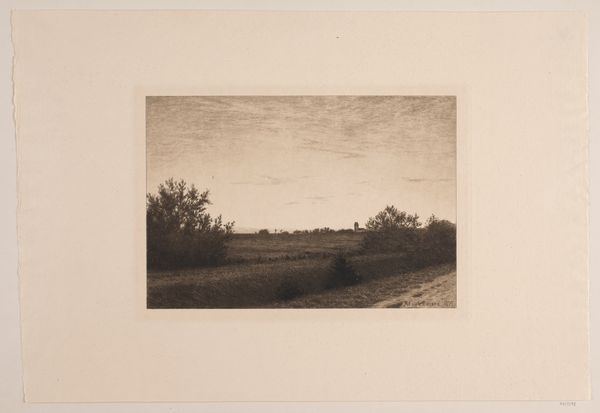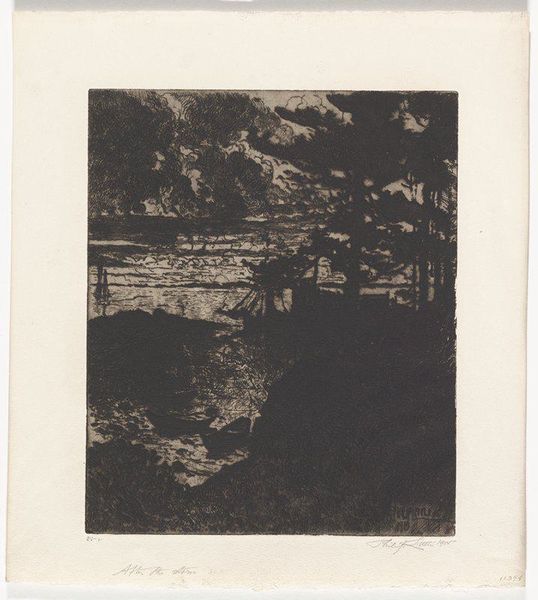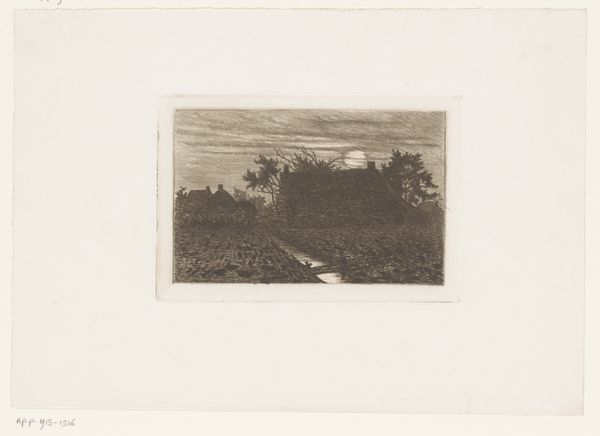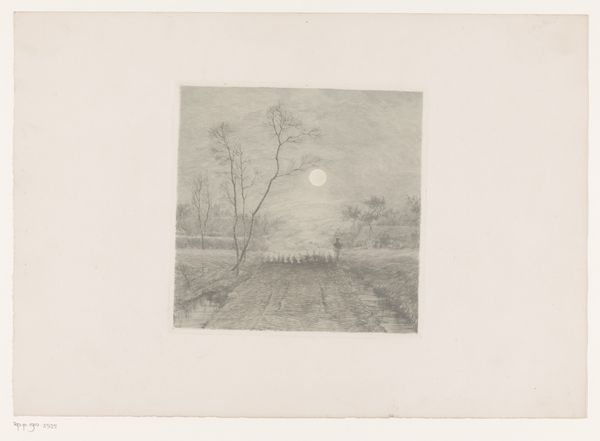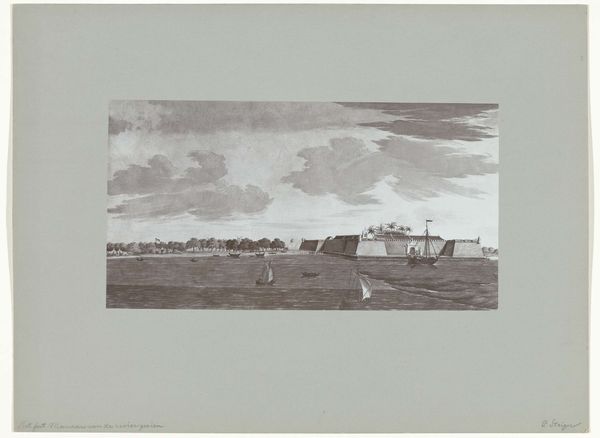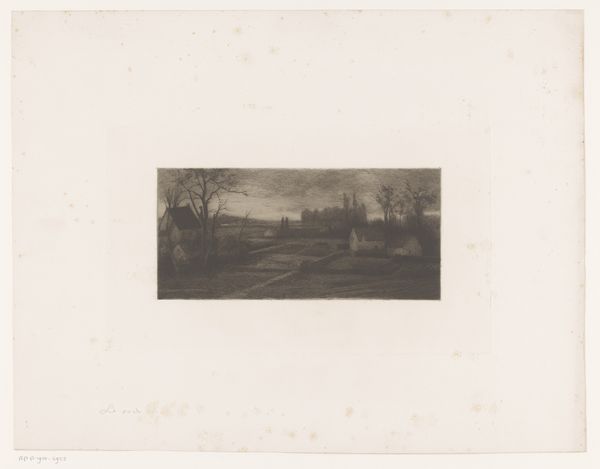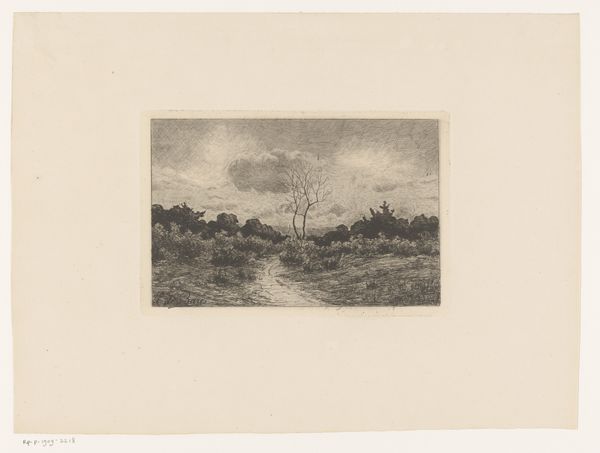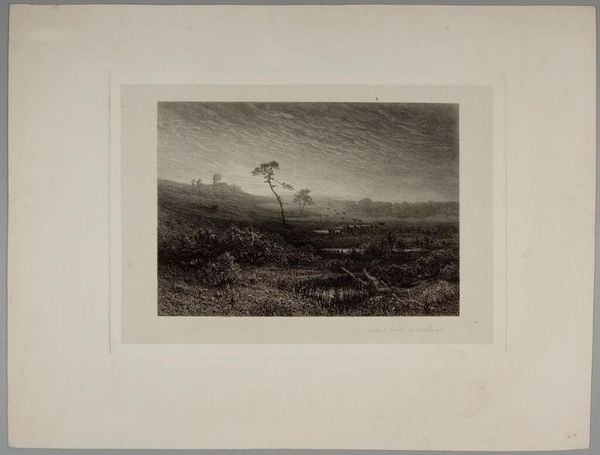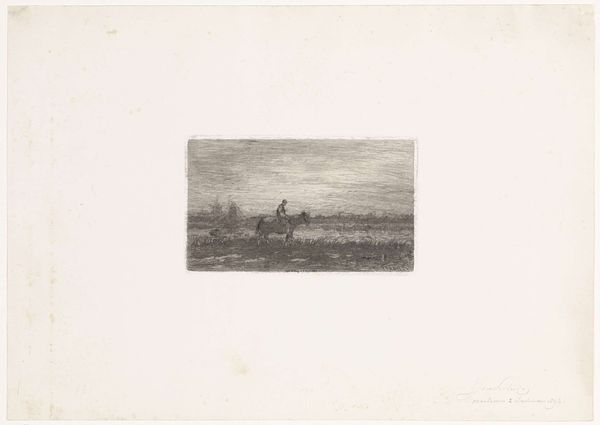
#
white colour balance
#
pencil drawn
#
photo of handprinted image
#
light pencil work
#
photo restoration
#
ink paper printed
#
pencil sketch
#
light coloured
#
old engraving style
#
pencil work
Dimensions: height 69 mm, width 123 mm, height 177 mm, width 266 mm
Copyright: Rijks Museum: Open Domain
Peter Henry Emerson made this photograph called 'Weidelandschap'. Emerson was a British photographer who advocated for photography as an art form. He challenged the prevailing artistic conventions of his time. In the late 19th century photography was often seen as a purely technical or documentary medium, and art photography often imitated painting. Emerson rejected these ideas and argued that photography should embrace its own unique qualities. Emerson was a proponent of naturalistic photography and this image shows his ideas in action. His goal was to capture scenes as they appeared to the human eye, with a focus on natural light and atmosphere. This photo also shows his interest in rural life and landscape, which were common subjects in art and literature of the time. The image has cultural significance as a reflection of the changing attitudes towards photography in the late 19th century, and it reflects the values and interests of its own time. Art historians use photographic journals, critical essays, and artists' manifestos to better understand photographs like these.
Comments
No comments
Be the first to comment and join the conversation on the ultimate creative platform.

